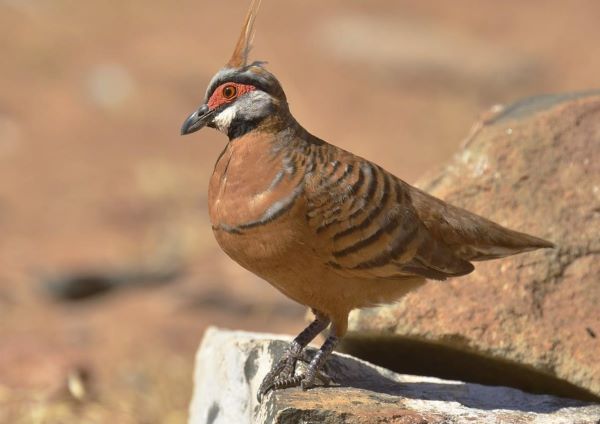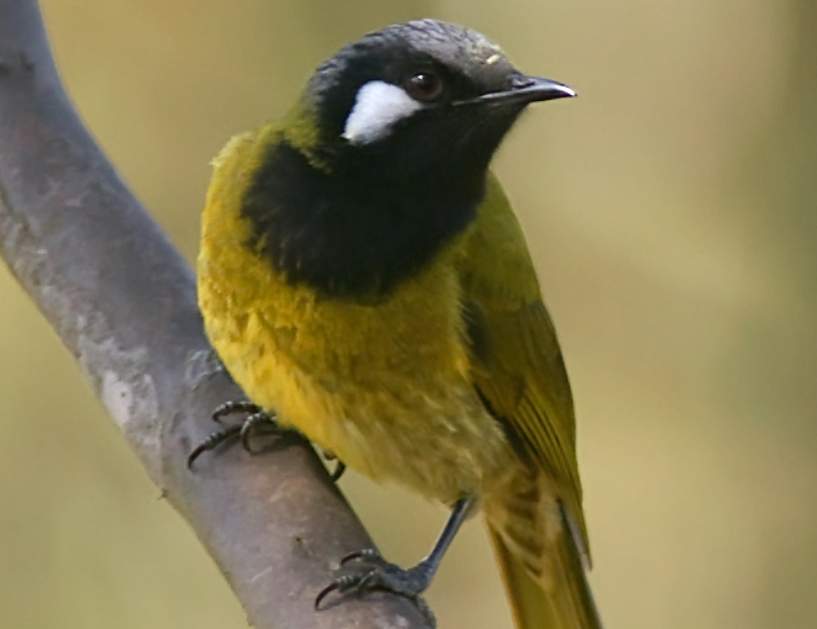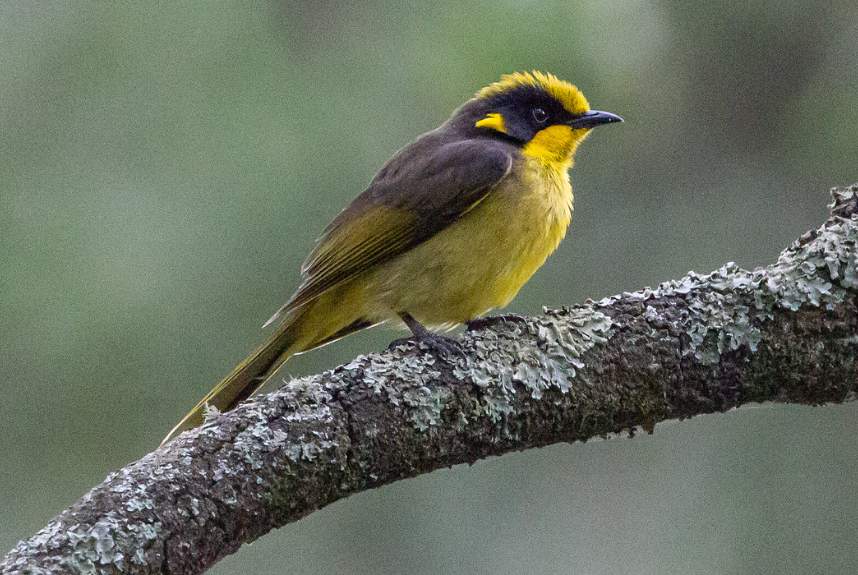Family: The Spinifex pigeon (Geophaps plumifera) belongs to the Columbidae family and is one of three endemic Australian bird species in the Geophaps genus.
Habitat: Many types of birds are found in the arid spinifex grasslands of central and northern Australia, but few are permanent residents. The Spinifex Pigeons are adapted to living there at all times. It is most commonly seen in arid and semi-arid areas with hummock-forming grasses from the Triodia and Plectrachne genera.
Although not confined to spinifex, they are closely associated with it, usually on stony ground, particularly where it is hilly. It lives in habitats characterized by intense heat during the day, extreme cold at night, large seasonal changes in rainfall, and extended periods of severe drought. These pigeons need to have access to water. In times of drought, they concentrate on the few remaining waterholes, and if the water lasts, they survive.
After the rains, when the ground is covered with quick-growing plants, the pigeons breed and their numbers gradually recover. Flocks became widespread then and were not so closely tied to springs and soaks. The spinifex pigeon is a weak long-distance flyer that is better adapted to short horizontal and vertical flights, which help them avoid predators in their favored environments, which include steep hills and gorges.

Vocalizations: The Spinifex Pigeon contact and advertising call is a little soft, low-pitched coo given as a single double note or in repeated phrases; in bowing display long aspirated coooo; in alarm, a cluck; growling coo in threat.
Identifications: Both adult sexes are similar. Males are slightly larger than females, making visual differentiation difficult. The white-bellied form has a blue-grey forehead; a rust-red crown with a tall pointed crest; a back rust-brown with darker brown scalloping; and a tail rust-brown, with the end half black. Wings rust-brown, barred with black and some light grey; bronze patch on secondaries. Cheek and throat white and grey with broad black band below; breast rust-red with broad white band edged with black; lower breast white; belly white to light brown on vent. Eye yellow; skin through eye red. Bill black. Thick feet are purple-brown. The red-bellied form has no white bar on the breast; the upper and lower breast and belly are rust-red. The immature bird looks like an adult but is duller and without a black-and-white face pattern. The downy young are sand-colored.
Diet: After rain has fallen, grasses, herbs, and legumes grow quickly on the bare red ground between the hummocks of spinifex. They produce a heavy seed crop and then die. The main food of the Spinifex Pigeons consists almost entirely of these seeds. Spinifex grass itself flowers erratically, and in some years no seeds are accessible, but in others, they are abundant and very vital in the birds’ diet. When humans leave food outside of camping areas, the spinifex pigeons will also take it. When the weather is cooler, foraging usually takes place near water sources in the early morning and late afternoon.
Other Names: This pigeon has several other names, like Plumed Dove, Gannaway Pigeon, Red Plumed Dove, Ground Dove, and Red Plumed Pigeon. John Gould originally defined the spinifex pigeon in 1842, and since then, the species and subspecies have undergone numerous revisions.
Behavior: Although it is uncommon, it does occur in human-occupied natural environments close to urban areas and has at least once been documented to have foraged on food given to domestic poultry. These pigeons are usually seen in small coveys of up to 15 birds, although they may sometimes form large concentrations. They live on the ground, feeding there, and can walk for long distances, but usually prefer to fly part of the way. Their flight is like that of the partridge—fast, low over the ground, with bursts of rapid wingbeats alternating with gliding on the down-swept wings. Sustained flight is uncommon, and the birds usually land after 30–32 meters or so. Spinifex pigeons, adapted to life in the desert, have a low metabolic rate.
This reduces their food requirements and the amount of water needed for cooling through evaporation. Perhaps to conserve energy, they also roost in tight-packed groups, clustering in small depressions or scrapes on the ground. The bowing display is like that of other bronzewing pigeons, and they use it in bouts of aggression as well. Fighting males lower their heads and bodies to the horizontal and attack on the run, circle bill to bill, and buffet one another with their wings. There is a regular annual cycle of sexual activity, and certain Spinifex pigeons can breed every month of the year under drought.
Rain has a dramatic effect on the breeding cycle, bringing the birds into the condition and synchronizing the entire population to breed when food is most abundant. Furthermore, this species exhibits a head-shaking gesture that might be interpreted as a greeting or a threat to other individuals.
The average lifespan of wild birds is not stated in the literature, and copulation takes place on the ground. Being primarily terrestrial in nature, they evade predators by running and using their rufous plumage to blend in with the desert sand and rocks. They rarely take to the air to flee, preferring to run away from danger as it approaches.

Distribution: The range of the white-bellied race Geophaps plumifera plumifera extends throughout the arid zones of western Queensland, north to the Gulf of Carpentaria, northwestern South Australia, the Northern Territory, and, in Western Australia, from the southern Kimberleys to Dampier Land. The range of red-bellied Geophaps plumifera ferruginea extends from Pilbara, Western Australia, north almost to southern Dampier Land.
Size: The Spinifex Pigeon measures about 190–230 mm in length. It weighs between 85 and 110 grams and has a wingspan of 310–350 mm
Nesting and Breeding: The spinifex pigeon’s nesting and breeding occurs throughout the year but can be affected by rainfall, mostly in September and November. Nest a scrape in the ground lined with a few pieces of grass, usually beside a hummock of spinifex or a rock.
Eggs and Incubations: The Spinifex Pigeon lays two eggs, which are cream, rather glossy, and ellipsoidal, about 26 x 20 mm. Incubation: 16–17 days, by both sexes. Young fledge in about eight days.
Subspecies: There are three subspecies, as below.
-
Eastern spinifex pigeon (Geophaps plumifera leucogaster)
-
North-western spinifex pigeon (Geophaps plumifera plumifera)
-
Pilbara spinifex pigeon (Geophaps plumifera ferruginea)
Status: The species is currently protected in various national parks across its range, and it is classified as a species of least concern on the IUCN Red List.
Read More: Chestnut-quilled rock pigeon (Petrophassa rufipennis)







